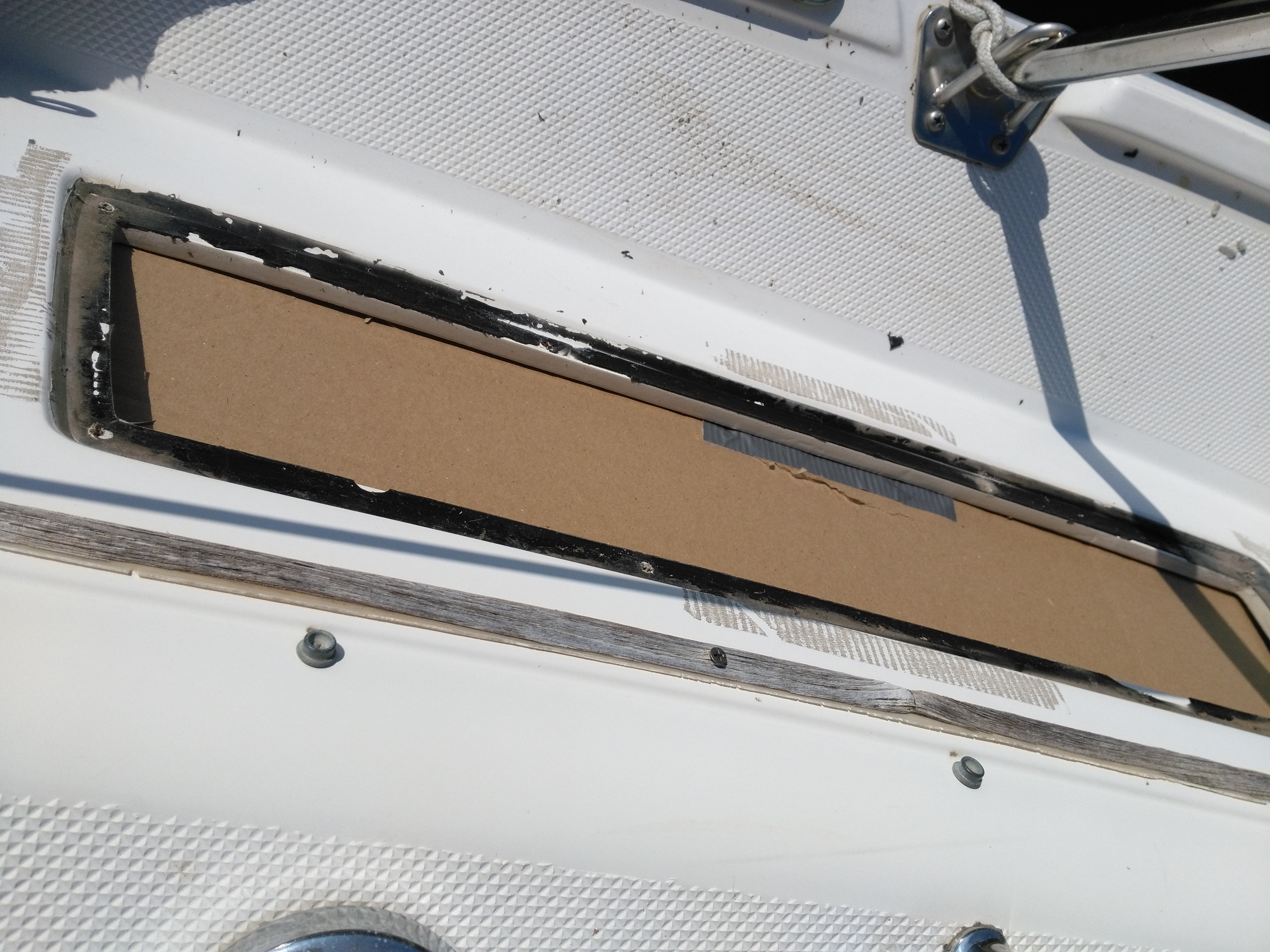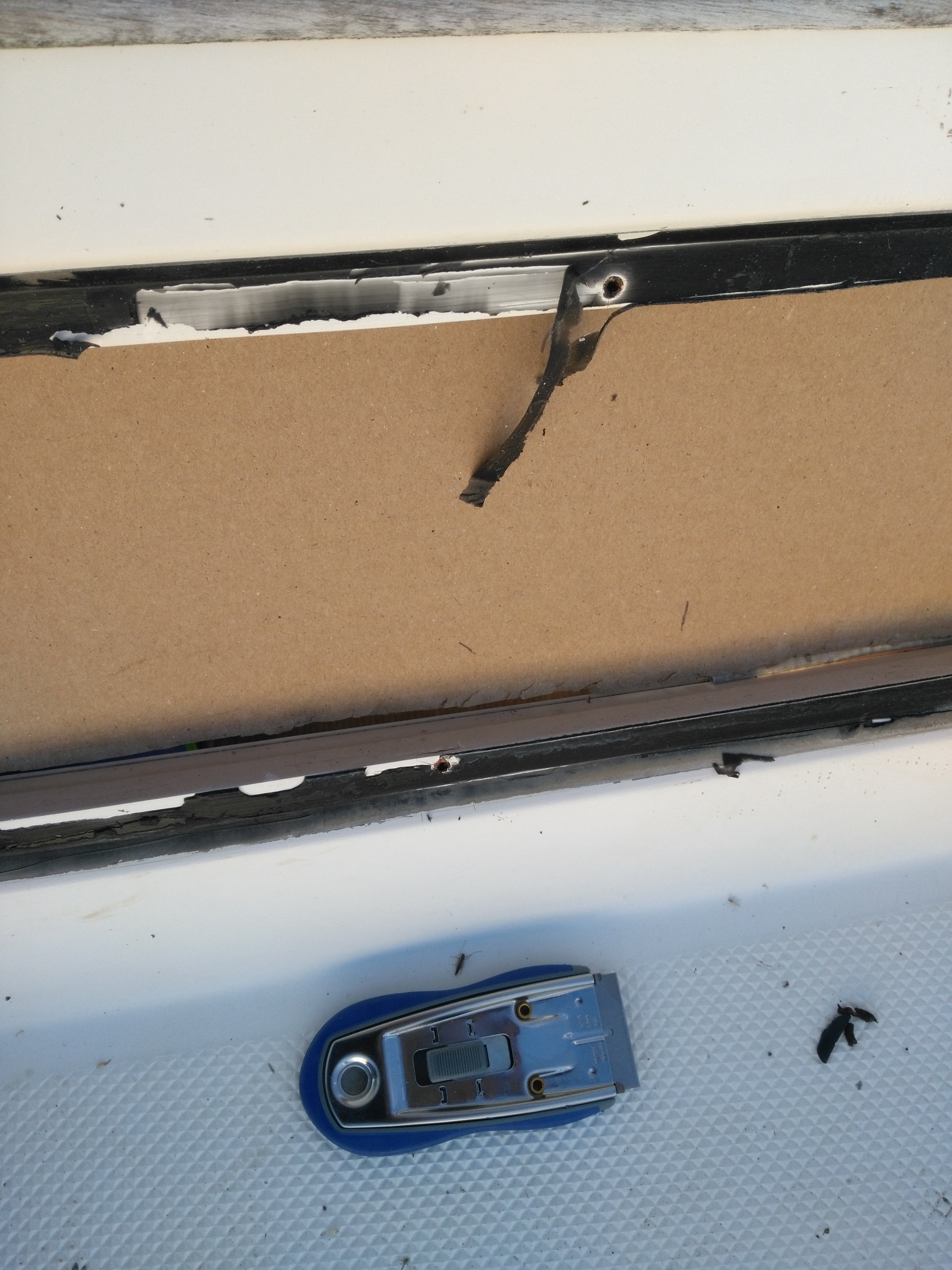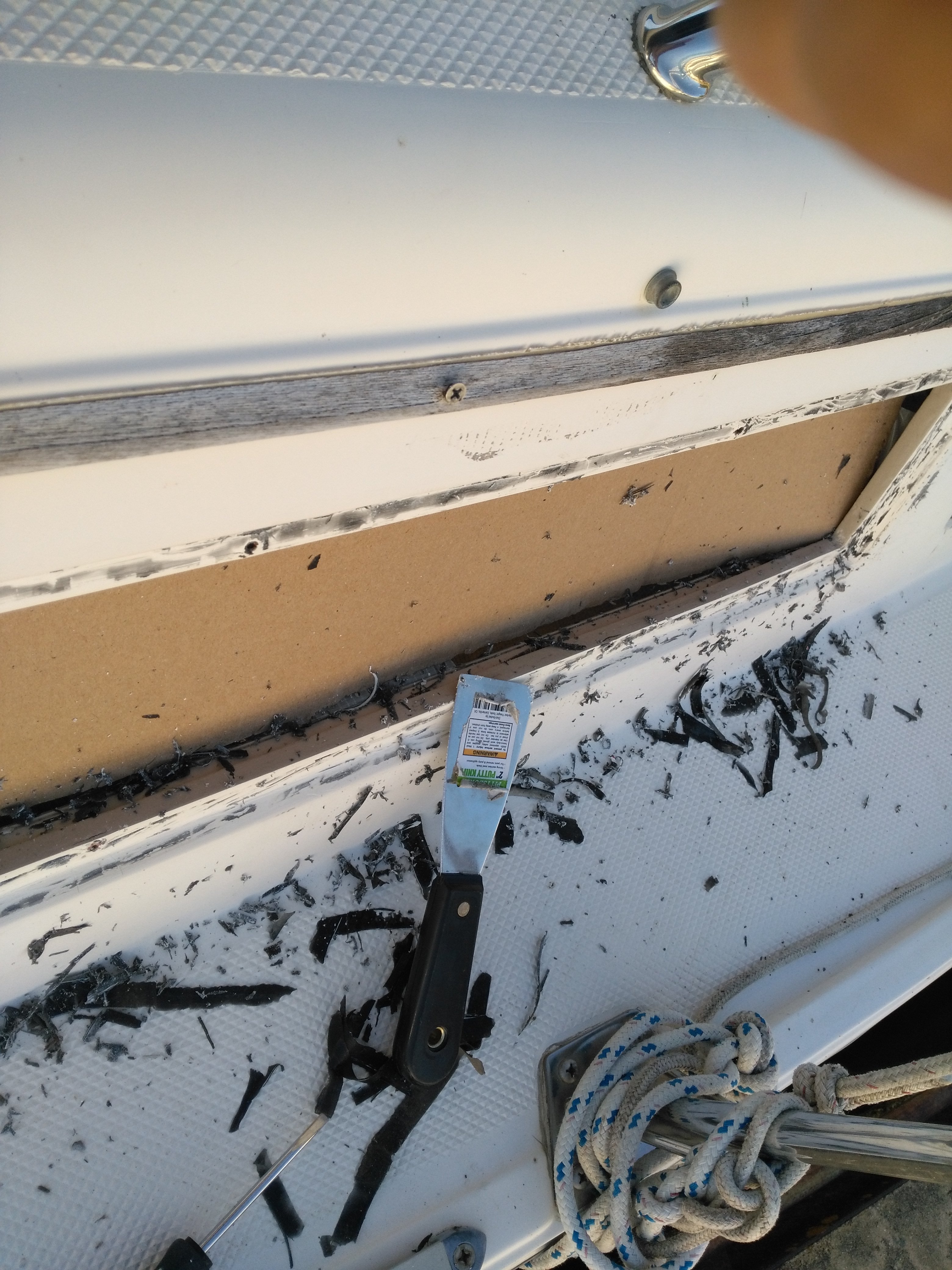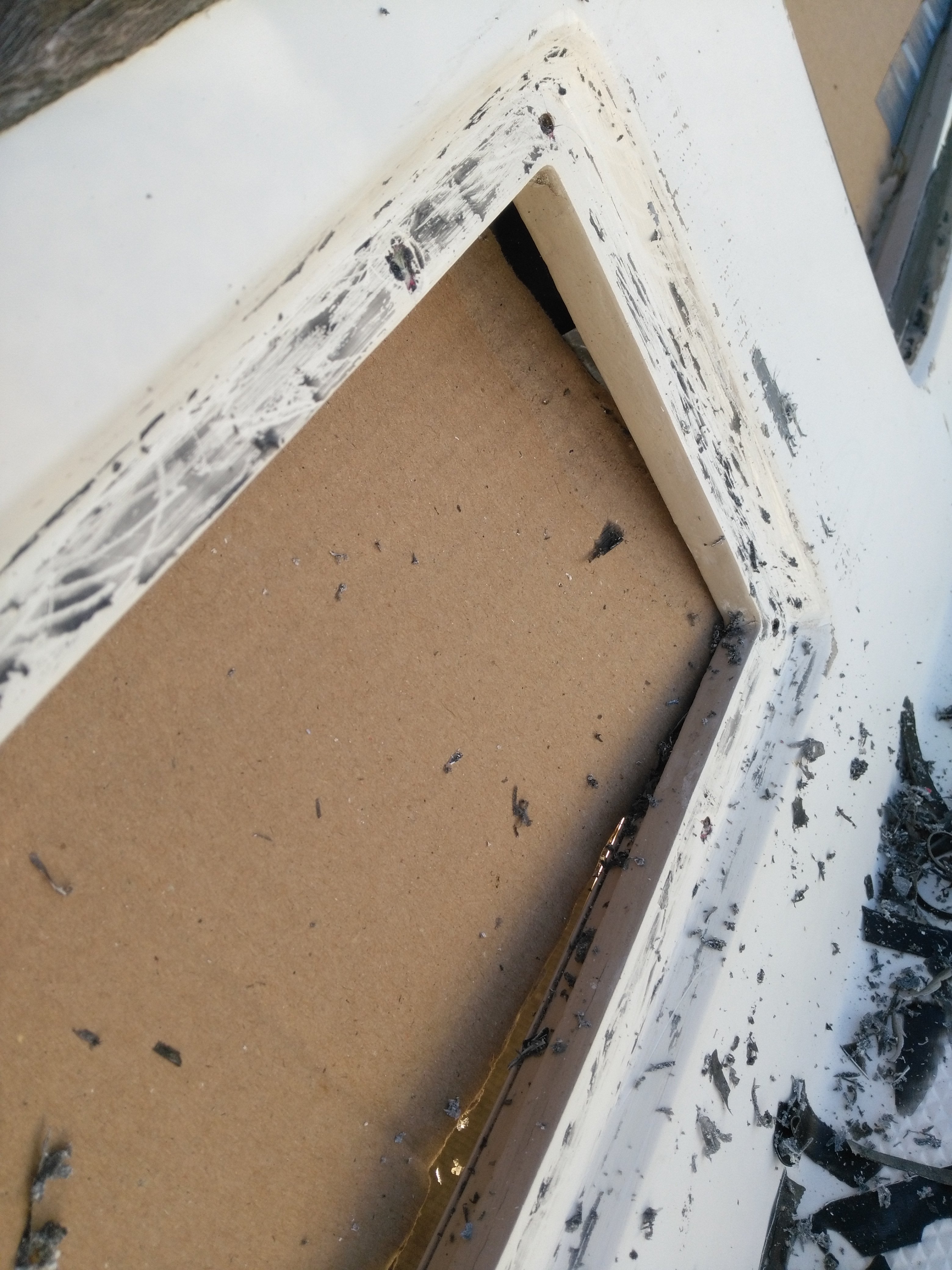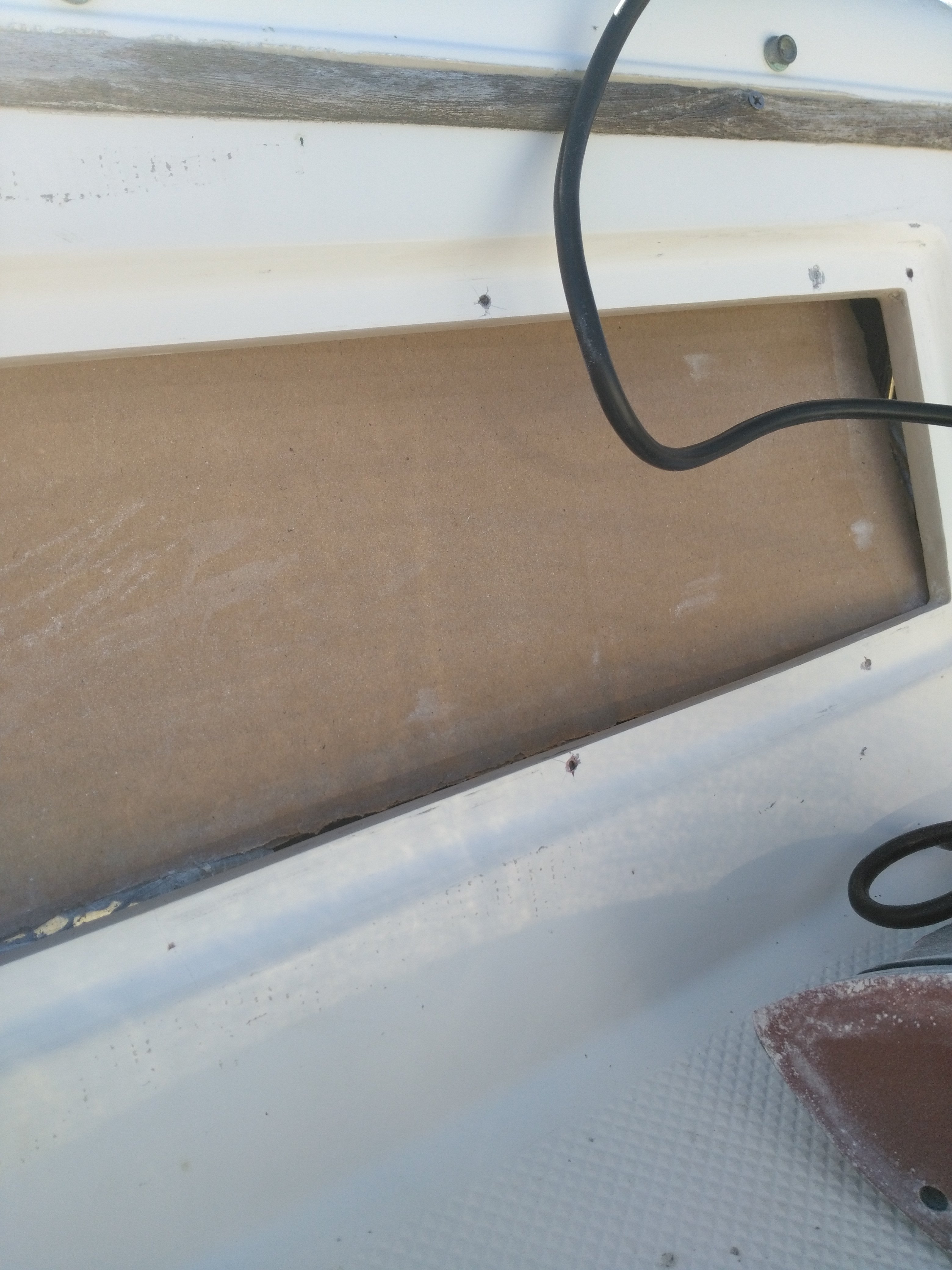I finally decided to address the acrylic windows that were sun damaged, crazed and leaking.
Outside-
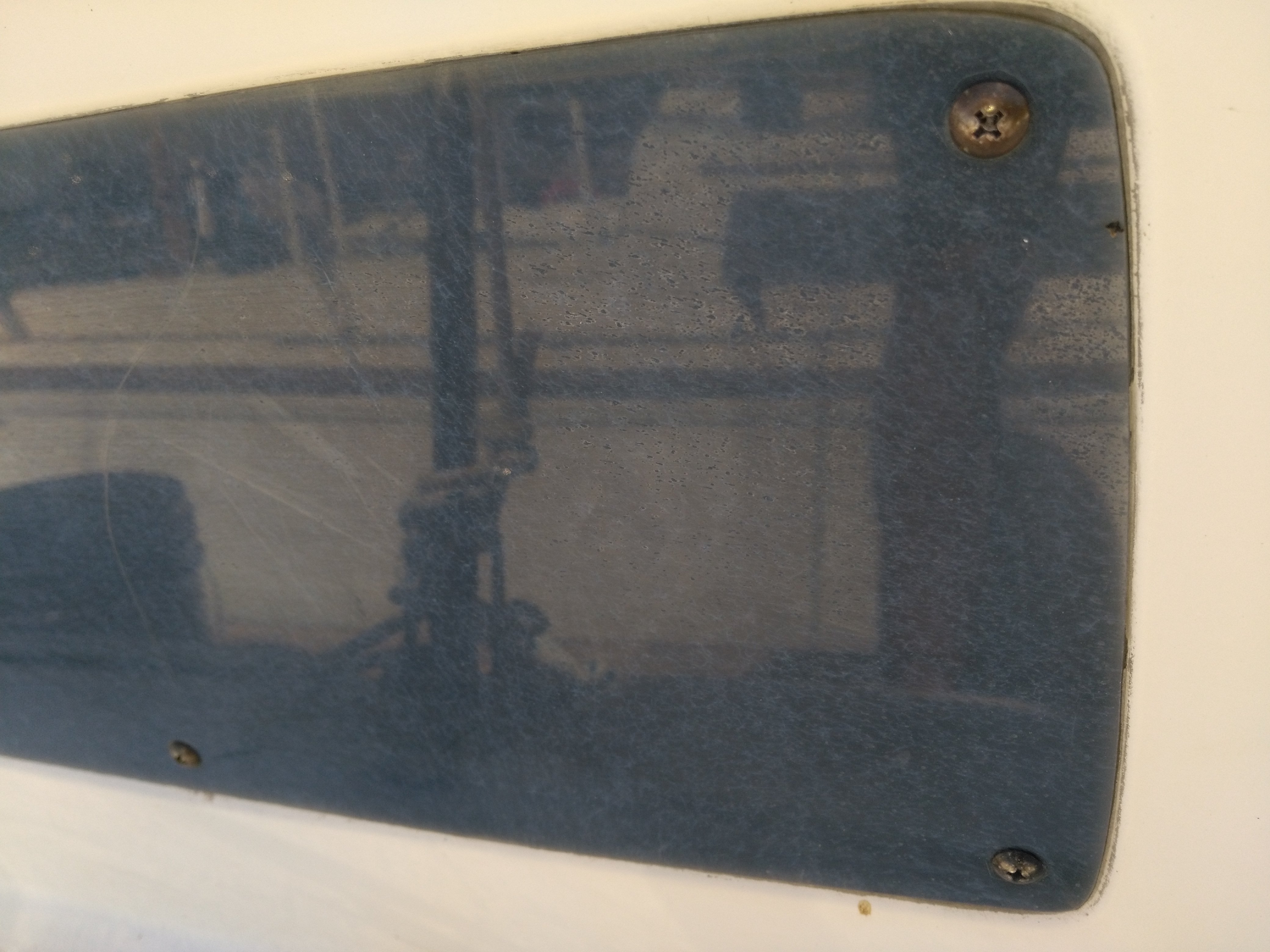
Inside-
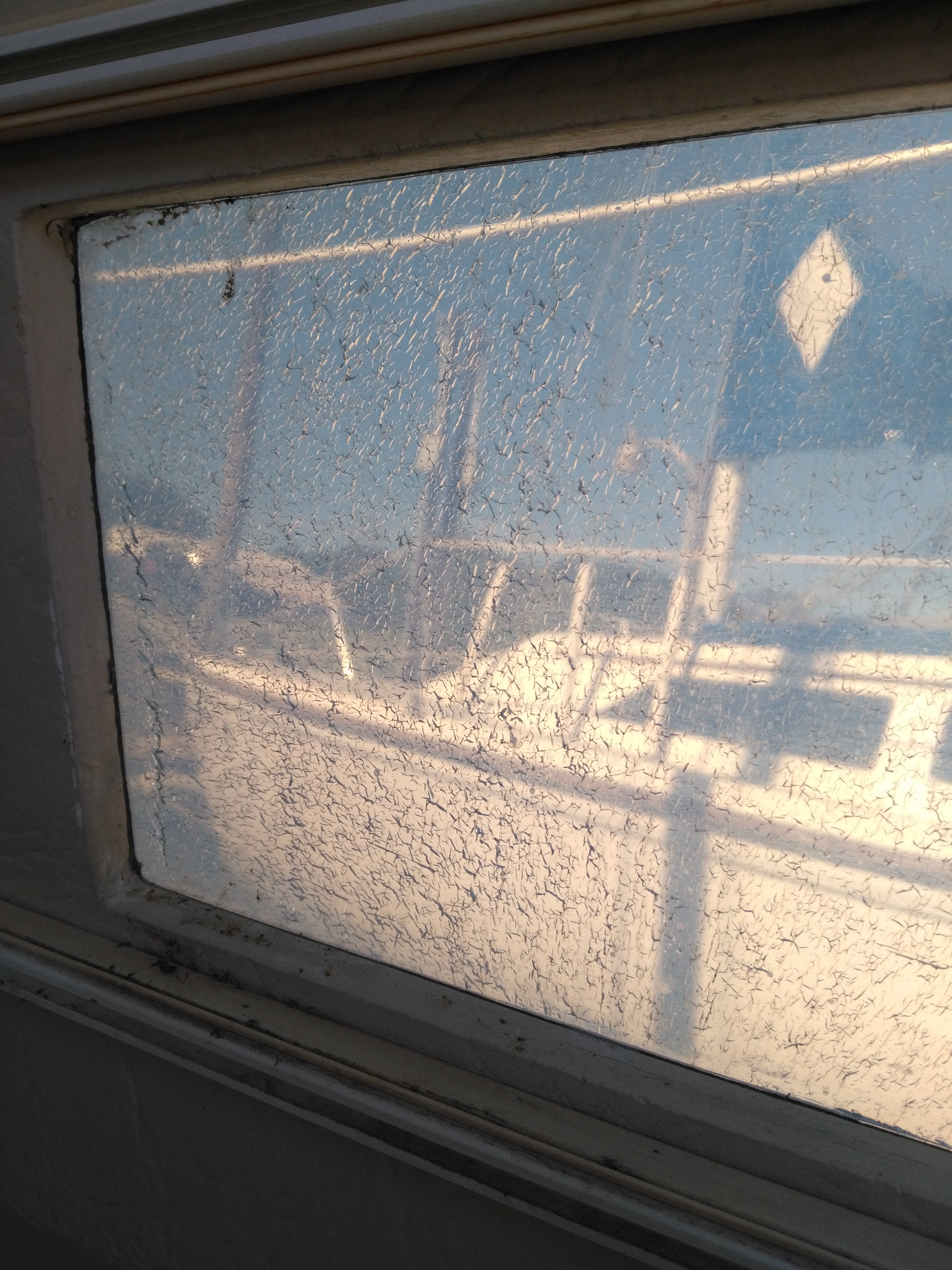
Several people recommended this resource from sail magazine: https://www.sailmagazine.com/diy/replacing-fixed-portlights
This youtube video seems like a independent validation:
So I dived in with irrational exuberance. After removing screws and running the putty knife around the seal from the inside, the acrylic pops off easy enough.
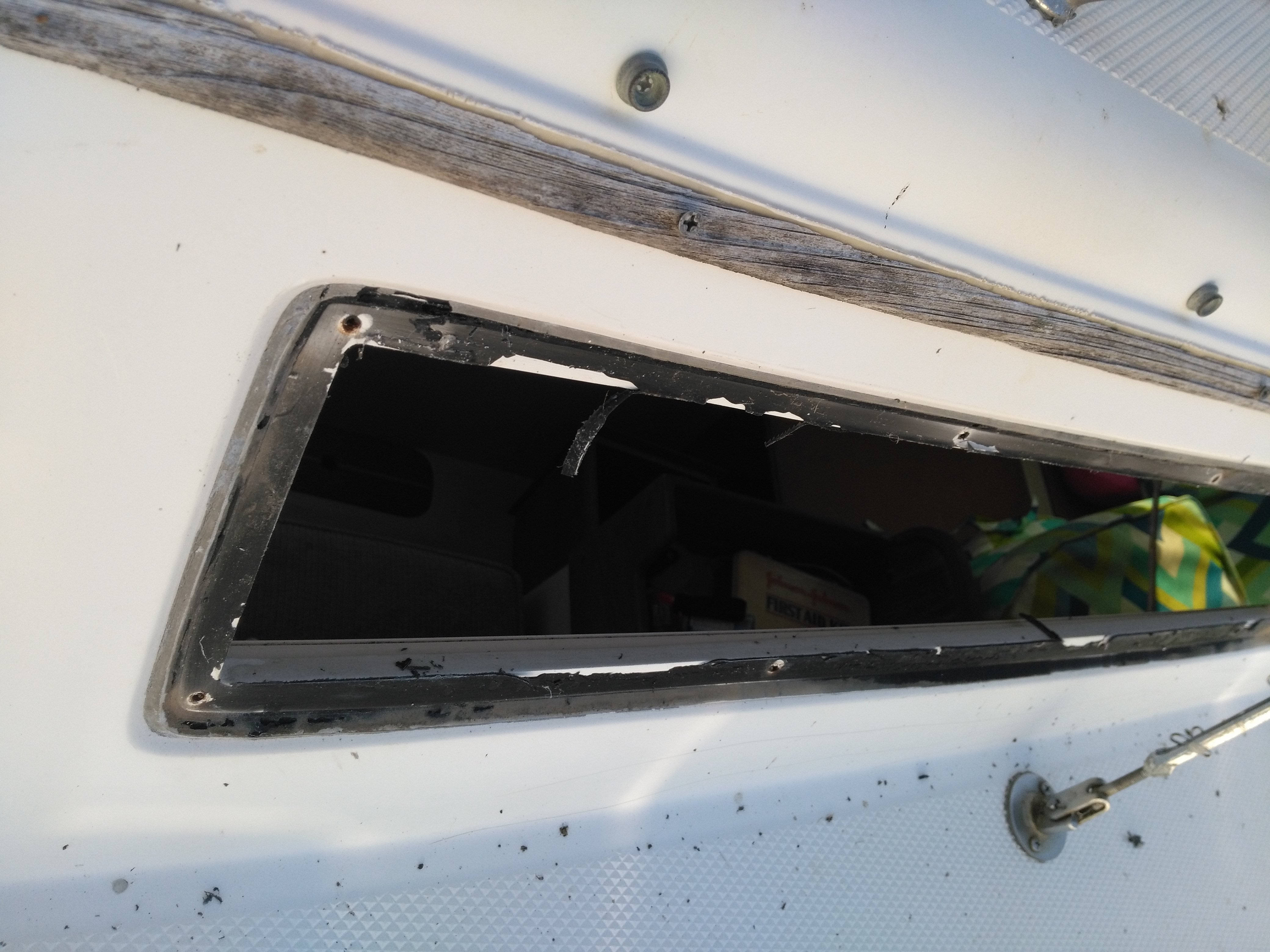
I dropped the old acrylic off at the local plastics fabrication shop to match the thickness, shape and bevel. I now turn my attention to surface prep while waiting on the new material. Does anyone have a quick and easy way to remove the old silicone based bedding material and get a proper surface for the 3M VHB (very high bond) tape to adhere? Also for the Dow Corning 795 sealant to stick.
I've thought of razor blade scrapers, wire wheel in a drill, 3M scrubber pad, repeated application of mineral spirits, and swearing. All of these seem like grueling work with questionable results. Any suggestions to get it done in an hour's time would be greatly appreciated. Also, any tips for installing the new material efficiently would be welcomed. Wind forecast for Saturday is 10-15 kts and I'd rather be sailing then scraping. B-)
KBG
Outside-

Inside-

Several people recommended this resource from sail magazine: https://www.sailmagazine.com/diy/replacing-fixed-portlights
This youtube video seems like a independent validation:
So I dived in with irrational exuberance. After removing screws and running the putty knife around the seal from the inside, the acrylic pops off easy enough.

I dropped the old acrylic off at the local plastics fabrication shop to match the thickness, shape and bevel. I now turn my attention to surface prep while waiting on the new material. Does anyone have a quick and easy way to remove the old silicone based bedding material and get a proper surface for the 3M VHB (very high bond) tape to adhere? Also for the Dow Corning 795 sealant to stick.
I've thought of razor blade scrapers, wire wheel in a drill, 3M scrubber pad, repeated application of mineral spirits, and swearing. All of these seem like grueling work with questionable results. Any suggestions to get it done in an hour's time would be greatly appreciated. Also, any tips for installing the new material efficiently would be welcomed. Wind forecast for Saturday is 10-15 kts and I'd rather be sailing then scraping. B-)
KBG






